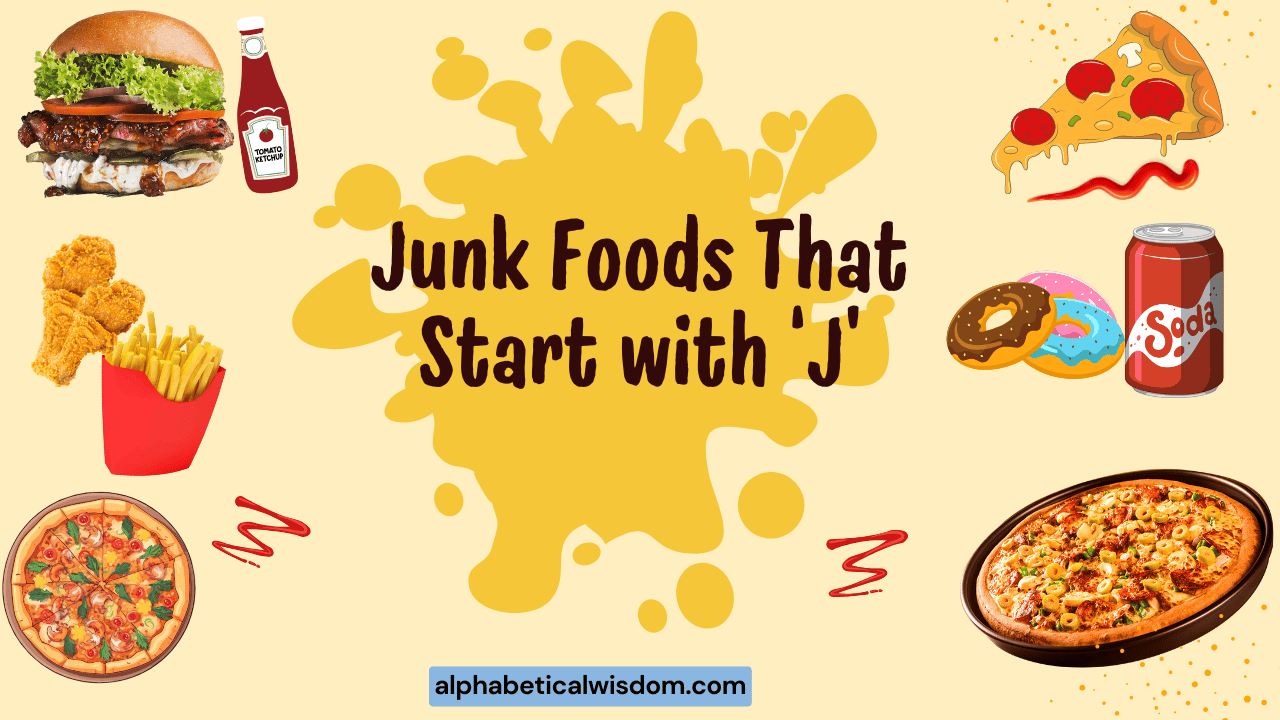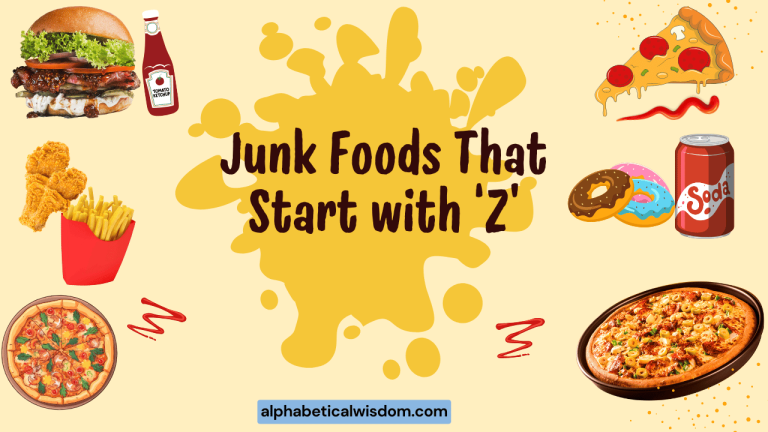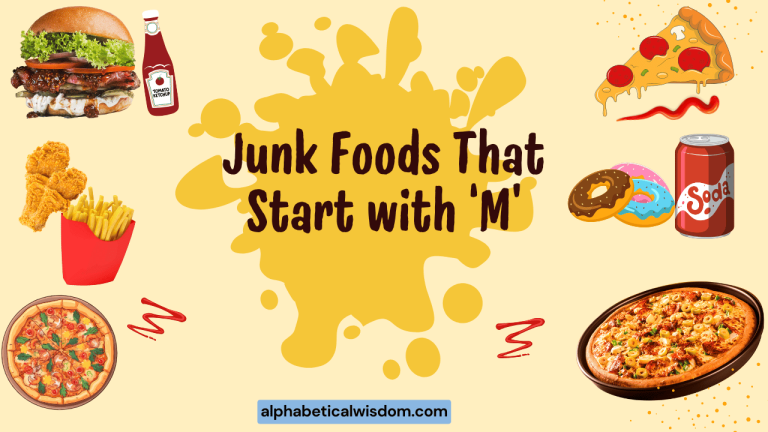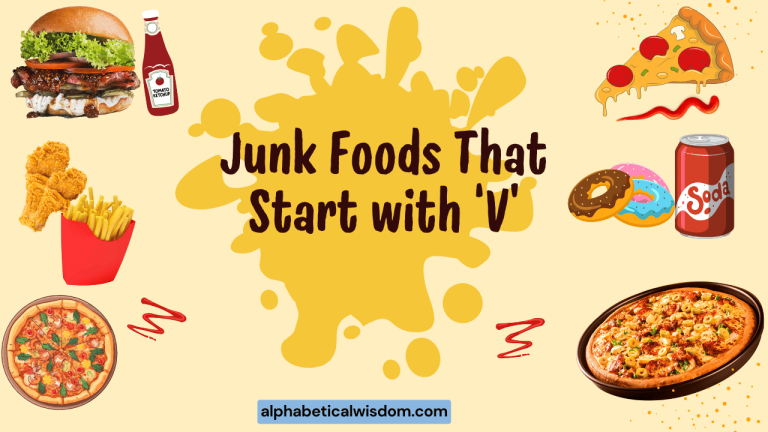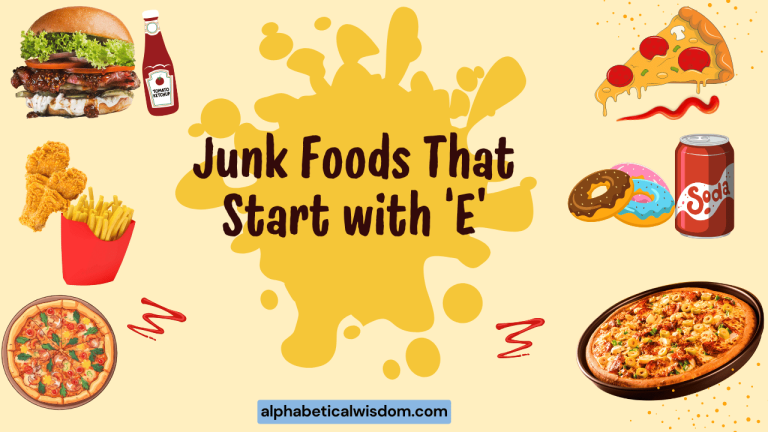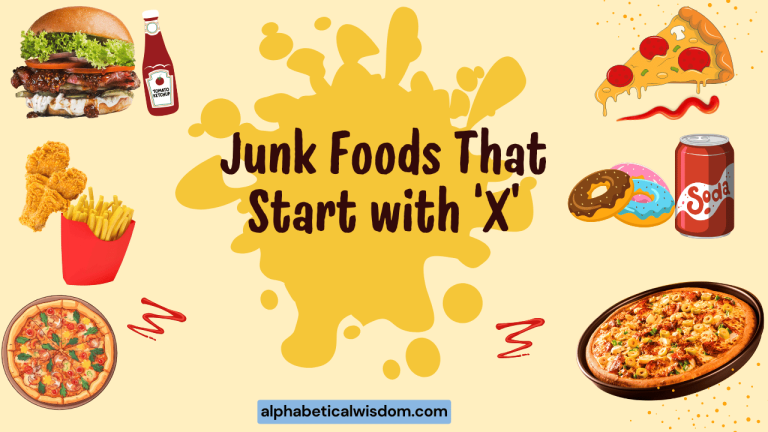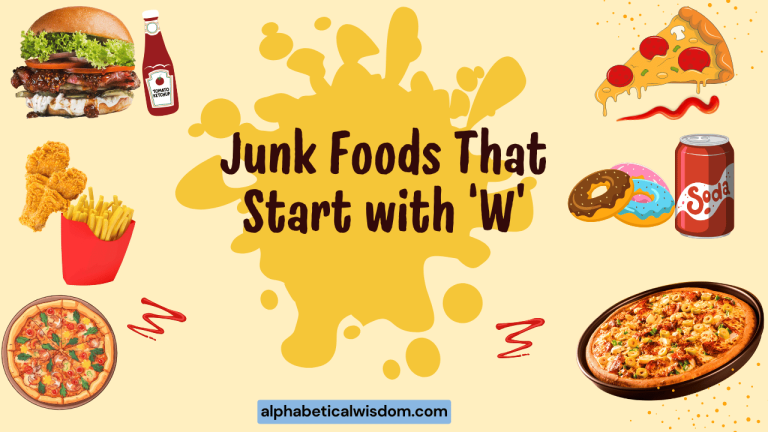Junk Food Nouns: A Grammatical Guide to Delicious Indulgences
Understanding how nouns function in the English language is crucial for effective communication. This article delves into the specific category of junk food nouns, exploring their grammatical properties, various forms, and usage in sentences.
By examining these nouns, we can enhance our understanding of noun classifications, countability, and their roles within sentence structures. This guide is perfect for English language learners of all levels, from beginners to advanced speakers, as well as educators looking for comprehensive resources.
Table of Contents
- Introduction
- Definition of Junk Food Nouns
- Structural Breakdown
- Types and Categories of Junk Food Nouns
- Examples of Junk Food Nouns
- Usage Rules for Junk Food Nouns
- Common Mistakes with Junk Food Nouns
- Practice Exercises
- Advanced Topics
- FAQ
- Conclusion
Introduction
Nouns are the building blocks of sentences, naming people, places, things, and ideas. Within the vast realm of nouns lies a particularly tempting category: junk food.
Understanding how to use junk food nouns correctly enhances our ability to describe our cravings, discuss dietary choices, and even analyze the cultural impact of these treats. This article provides a comprehensive guide to junk food nouns, covering their grammatical properties, classifications, and usage rules, ensuring you can confidently incorporate these delicious words into your vocabulary.
Definition of Junk Food Nouns
A junk food noun refers to a word that names a specific type of food considered to be unhealthy due to its high levels of calories, fats, sugars, or salt, with little nutritional value. These nouns can be either countable or uncountable, and they function as subjects, objects, complements, or modifiers within a sentence. Understanding the grammatical properties of these nouns is essential for constructing accurate and meaningful sentences.
Classification of Junk Food Nouns
Junk food nouns can be classified based on several criteria, including countability and specificity. Countable nouns can be singular or plural, while uncountable nouns are typically treated as singular.
Specificity refers to how precisely the noun identifies a particular type of junk food.
Function of Junk Food Nouns
Junk food nouns perform various functions within a sentence. They can act as the subject (“Jelly beans are my favorite treat.”), the direct object (“I ate the jumbo fries.”), the indirect object (“He gave the kids jawbreakers.”), or the object of a preposition (“She had a craving for jelly donuts.”).
Contexts of Junk Food Nouns
Junk food nouns are used in a variety of contexts, including casual conversations, nutritional discussions, marketing materials, and even literary works. The specific context often dictates the level of formality and the descriptive details used with the noun. For example, in a health article, “jelly-filled pastries” might be used to emphasize the high sugar content, while in a casual conversation, “jelly donuts” would suffice.
Structural Breakdown
The structure of junk food nouns can be analyzed based on their composition and the presence of modifiers. Many junk food nouns are compound nouns, formed by combining two or more words (e.g., “jelly roll,” “jumbo slice“). Modifiers, such as adjectives, can be added to provide more specific details about the junk food (e.g., “glazed jelly donut,” “crispy jumbo fries“).
Compound Nouns
Compound nouns are formed when two or more words are used together to form a single noun. These can be open (e.g., “ice cream“), closed (e.g., “popcorn“), or hyphenated (e.g., “sugar-free“). In the context of junk food, compound nouns are common (e.g., jelly bean, jumbo jet soda).
Modifiers
Adjectives are frequently used to modify junk food nouns, providing additional information about their characteristics. These modifiers can describe the taste (e.g., “sweet jelly donut”), texture (e.g., “crispy jumbo fries”), size (e.g., “minijawbreakers”), or other qualities.
Types and Categories of Junk Food Nouns
Junk food nouns can be categorized in several ways, including by their primary ingredients, their form, and their cultural origin. Understanding these categories can help you choose the most appropriate noun for a given situation.
Based on Primary Ingredient
This categorization focuses on the main components of the junk food. For example:
- Sugar-based: Jelly beans, jawbreakers, jelly rolls
- Fat-based: Jumbo fries, fried chips
- Grain-based: donuts, junk food pizza
Based on Form
This categorization considers the physical form of the junk food:
- Solid: Jawbreakers, jelly beans
- Liquid: Jumbo jet soda, junk food milkshakes
- Semi-solid: Jelly rolls, junk food pudding
Based on Cultural Origin
This categorization reflects the cultural background or origin of the junk food:
- American: Jumbo fries, jelly donuts
- International: Japanese Pocky, junk food gelato
Examples of Junk Food Nouns
The following tables provide extensive examples of junk food nouns, categorized by their countability and function in sentences. These examples illustrate the diverse ways in which these nouns can be used in English.
Countable Junk Food Nouns
Countable junk food nouns refer to individual items that can be counted. They have both singular and plural forms.
The table below lists several examples, with sentences illustrating their usage.
| Junk Food Noun (Singular) | Junk Food Noun (Plural) | Example Sentence |
|---|---|---|
| Jawbreaker | Jawbreakers | I bought a jawbreaker at the candy store. |
| Jelly bean | Jelly beans | She loves to eat jelly beans during movies. |
| Jelly donut | Jelly donuts | He ordered two jelly donuts for breakfast. |
| Jumbo slice | Jumbo slices | They sell jumbo slices of pizza down the street. |
| Jelly roll | Jelly rolls | My grandmother makes delicious jelly rolls. |
| Jackfruit jerky | Jackfruit jerkys | I tried a jackfruit jerky at the farmers market. |
| Jaffa cake | Jaffa cakes | He brought a box of Jaffa cakes to the party. |
| Jelly baby | Jelly babies | The kids were excited to receive jelly babies. |
| Jelly cup | Jelly cups | She packed jelly cups for the picnic. |
| Jujube | Jujubes | He likes to snack on jujubes while working. |
| Junket | Junkets | She made junkets for dessert. |
| Jelly snack | Jelly snacks | He likes jelly snacks in his lunchbox |
| Johnny cake | Johnny cakes | She baked johnny cakes for the potluck. |
| Jelly candy | Jelly candies | He loves jelly candies after dinner. |
| Junk food bar | Junk food bars | She bought junk food bars at the convenience store. |
| Junk food biscuit | Junk food biscuits | He ate junk food biscuits for breakfast. |
| Junk food cookie | Junk food cookies | She shared junk food cookies with her friends. |
| Jumbo candy | Jumbo candies | He gave the kids jumbo candies as a treat. |
| Jelly filled pastry | Jelly filled pastries | She bought jelly filled pastries from the bakery. |
| Junk food sandwich | Junk food sandwiches | He ordered junk food sandwiches at the restaurant. |
| Jelly fruit | Jelly fruits | She likes to eat jelly fruits after lunch. |
| Jelly dessert | Jelly desserts | He prepared jelly desserts for the party. |
| Jelly treat | Jelly treats | She gave the children jelly treats for being good. |
Uncountable Junk Food Nouns
Uncountable junk food nouns refer to substances or general categories that cannot be counted as individual items. They are typically used with singular verbs.
The table below provides examples and their usage in sentences.
| Junk Food Noun (Uncountable) | Example Sentence |
|---|---|
| Jelly | She spread jelly on her toast. |
| Jumbo fries | He ordered a large portion of jumbo fries. |
| Junk food | Eating too much junk food is bad for your health. |
| Junk food batter | She prepared the junk food batter for the fried snacks. |
| Junk food sauce | He added junk food sauce to his meal. |
| Junk food icing | She decorated the cake with junk food icing. |
| Junk food filling | The pastry had a sweet junk food filling. |
| Junk food topping | He sprinkled junk food topping on the ice cream. |
| Junk food syrup | She drizzled junk food syrup over the pancakes. |
| Junk food mix | He prepared a junk food mix for the party. |
| Jell-O | She made Jell-O for dessert. |
| Junk food spread | He added junk food spread to his toast. |
| Junk food dust | She sprinkled junk food dust on the cake. |
| Junk food powder | He used junk food powder to flavor the drink. |
| Junk food oil | She fried the food in junk food oil. |
| Junk food sugar | He added junk food sugar to the coffee. |
| Junk food salt | She sprinkled junk food salt on the fries. |
| Junk food glaze | He coated the donuts with junk food glaze. |
| Junk food additive | The product contains junk food additive. |
| Junk food flavoring | She used junk food flavoring in the recipe. |
| Junk food coloring | He added junk food coloring to the cake. |
| Junk food preservative | The product contains junk food preservative. |
| Junk food extract | She used junk food extract to enhance the flavor. |
Junk Food Nouns as Subjects, Objects, and Complements
Junk food nouns can function as different parts of a sentence, including subjects, direct objects, indirect objects, and complements. The table below provides examples illustrating these different functions.
| Function | Example Sentence | Junk Food Noun |
|---|---|---|
| Subject | Jelly beans are my favorite candy. | Jelly beans |
| Direct Object | I ate a jelly donut. | Jelly donut |
| Indirect Object | She gave the child a jawbreaker. | Jawbreaker |
| Object of Preposition | He has a craving for jumbo fries. | Jumbo fries |
| Subject Complement | My favorite snack is jelly. | Jelly |
| Object Complement | They consider the pizza a junk food. | Junk food |
| Subject | Jaffa cakes are a popular treat in the UK. | Jaffa cakes |
| Direct Object | He purchased jackfruit jerky at the store. | Jackfruit jerky |
| Indirect Object | She offered him junket for dessert. | Junket |
| Object of Preposition | He is allergic to ingredients in jelly cups. | Jelly cups |
| Subject Complement | His favorite candy is jujubes. | Jujubes |
| Subject | Junk food biscuits are not healthy. | Junk food biscuits |
| Direct Object | She baked johnny cakes for the party. | Johnny cakes |
| Indirect Object | He gave the kids jumbo candies. | Jumbo candies |
| Object of Preposition | She is addicted to junk food spread. | Junk food spread |
| Subject Complement | Her favorite snack is jelly desserts. | Jelly desserts |
Usage Rules for Junk Food Nouns
Using junk food nouns correctly involves understanding their countability, agreement with verbs, and proper use of articles and quantifiers. This section outlines the key rules to follow.
Countability and Verb Agreement
Countable junk food nouns require plural verbs when used in the plural form (e.g., “Jelly beans are delicious.”). Uncountable junk food nouns always take singular verbs (e.g., “Junk food is unhealthy.”).
Articles and Quantifiers
Use “a” or “an” before singular countable junk food nouns (e.g., “I ate a jelly donut.”). Use “some” or other quantifiers (e.g., “much,” “many,” “a lot of”) with both countable and uncountable junk food nouns (e.g., “I ate some jelly beans.” “I ate a lot of junk food.”).
Exceptions and Special Cases
Some junk food nouns can be used as both countable and uncountable, depending on the context. For example, “jelly” is typically uncountable (e.g., “I like jelly on my toast.”), but it can be countable when referring to individual servings (e.g., “I bought three jellies.”).
Common Mistakes with Junk Food Nouns
Learners often make mistakes with junk food nouns related to countability and verb agreement. This section highlights common errors and provides correct examples.
Incorrect Countability
| Incorrect | Correct | Explanation |
|---|---|---|
| I ate a junk food. | I ate some junk food. | “Junk food” is uncountable and does not take “a” or “an.” |
| I want two jelly. | I want two jellies. | When referring to individual servings, “jelly” becomes countable. |
Incorrect Verb Agreement
| Incorrect | Correct | Explanation |
|---|---|---|
| Jelly beans is my favorite. | Jelly beans are my favorite. | “Jelly beans” is plural and requires a plural verb. |
| Junk food are bad for you. | Junk food is bad for you. | “Junk food” is uncountable and requires a singular verb. |
Practice Exercises
Test your understanding of junk food nouns with the following exercises. Identify the correct form of the noun and verb agreement in each sentence.
Exercise 1: Countable vs. Uncountable
Choose the correct form of the junk food noun in each sentence.
| Question | Options | Answer |
|---|---|---|
| I want to buy some ____________. | (jelly bean / jelly beans) | jelly beans |
| Too much ____________ is not good for you. | (junk food / junk foods) | junk food |
| She ate a ____________ for breakfast. | (jelly donut / jelly donuts) | jelly donut |
| He loves to snack on ____________. | (jawbreaker / jawbreakers) | jawbreakers |
| They ordered ____________ with their meal. | (jumbo fries / jumbo fry) | jumbo fries |
| She baked ____________ for the party. | (johnny cake / johnny cakes) | johnny cakes |
| He added ____________ to his toast. | (junk food spread / junk food spreads) | junk food spread |
| She made ____________ for dessert. | (junket / junkets) | junket |
| They sell ____________ down the street. | (jumbo slice / jumbo slices) | jumbo slices |
| She bought ____________ at the store. | (jackfruit jerky / jackfruit jerkys) | jackfruit jerky |
Exercise 2: Verb Agreement
Choose the correct verb form in each sentence.
| Question | Options | Answer |
|---|---|---|
| Jelly beans ____________ my favorite candy. | (is / are) | are |
| Junk food ____________ bad for you. | (is / are) | is |
| A jelly donut ____________ a sweet treat. | (is / are) | is |
| Jumbo fries ____________ often high in calories. | (is / are) | are |
| Jelly ____________ often used as a spread. | (is / are) | is |
| Jaffa cakes ____________ a popular snack. | (is / are) | are |
| Jumbos candies ____________ tasty. | (is / are) | are |
| Junk food biscuits ____________ unhealthy. | (is / are) | are |
| Junk food spread ____________ delicious on toast. | (is / are) | is |
| Jelly desserts ____________ often served cold. | (is / are) | are |
Advanced Topics
For advanced learners, understanding the nuances of junk food nouns can involve exploring their use in figurative language, idiomatic expressions, and cultural contexts.
Figurative Language
Junk food nouns can be used metaphorically or symbolically. For example, “jumbo fries” might represent excess or indulgence in a broader sense. Analyzing these figurative uses can deepen your understanding of language.
Idiomatic Expressions
While not common, junk food nouns could appear in idiomatic expressions. Understanding these expressions requires familiarity with cultural references and contextual meanings.
For example, consider the phrase “life is a box of chocolates,” which uses candy (a related junk food) to symbolize unpredictable experiences.
FAQ
Here are some frequently asked questions about junk food nouns:
- What is the difference between a countable and uncountable junk food noun?
Countable junk food nouns can be counted as individual items and have plural forms (e.g., “jelly beans,” “jelly donuts”). Uncountable junk food nouns refer to substances or general categories and do not have plural forms (e.g., “junk food,” “jelly”).
- How do I know whether to use a singular or plural verb with a junk food noun?
If the junk food noun is countable and in the plural form, use a plural verb (e.g., “Jelly beans are delicious.”). If the junk food noun is uncountable, use a singular verb (e.g., “Junk food is unhealthy.”).
- Can a junk food noun be both countable and uncountable?
Yes, some junk food nouns can be used as both countable and uncountable, depending on the context. For example, “jelly” is typically uncountable, but it can be countable when referring to individual servings.
- What are some common mistakes to avoid when using junk food nouns?
Avoid using “a” or “an” before uncountable junk food nouns (e.g., “I ate some junk food,” not “I ate a junk food.”). Also, ensure that your verb agreement matches the countability of the noun.
- Why is understanding junk food nouns important?
Understanding junk food nouns allows for more precise communication about dietary choices, cultural habits, and nutritional discussions. It also helps in constructing grammatically correct and meaningful sentences.
- How can I improve my usage of junk food nouns?
Practice using junk food nouns in different contexts, pay attention to their countability, and review common mistakes. Reading and listening to native English speakers can also help improve your understanding and usage.
- Are there any specific rules for using articles (a, an, the) with junk food nouns?
Use “a” or “an” before singular countable junk food nouns when referring to a non-specific item (e.g., “I ate a jelly donut.”). Use “the” when referring to a specific item or a previously mentioned item (e.g., “The jelly donut I ate was delicious.”).
- Can junk food nouns be modified by adjectives?
Yes, adjectives can be used to modify junk food nouns, providing additional information about their characteristics (e.g., “sweet jelly donut,” “crispy jumbo fries”).
- Are there any regional variations in the terms used for junk food nouns?
Yes, there can be regional variations in the terms used for junk food nouns. For example, what is called “jelly” in the US might be called “jam” in other parts of the world. Similarly, the type of fries may vary by region.
- How can I learn more about the cultural origins of different junk food nouns?
Researching the history and cultural context of different junk foods can provide insights into their origins and usage. Online resources, cookbooks, and cultural studies can be valuable sources of information.
Conclusion
Mastering junk food nouns enhances your ability to communicate effectively about food, culture, and personal preferences. Understanding their countability, function, and usage rules allows you to construct grammatically correct sentences and express yourself with precision.
By practicing with the examples and exercises provided in this article, you can confidently incorporate these delicious words into your vocabulary. Remember to pay attention to countability and verb agreement, and continue to explore the nuances of language through reading and practice.
